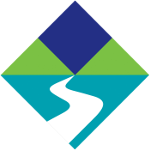Passionate individuals from the community joined local agencies last week to discuss a shared commitment to the conservation of Magees Gully.
Magees Gully, nestled in the heart of Bairnsdale, flows into Macleod Morass near the Bairnsdale Livestock Exchange, forming part of the Gippsland Lakes Ramsar listed waterway. This environment is a crucial habitat for endangered waterbirds and wildlife.
The rain must have received the invitation to the community event too, as it poured down just as 32 people gathered to walk through the gully and talk about the area’s future.
Representatives from many local community groups attended including local Landcare groups, Friends of Gippsland Lakes, BirdLife, joining several agencies including East Gippsland Shire Council, East Gippsland Water, East Gippsland Catchment Management Authority, Trust for Nature and Parks Victoria.
After seeking shelter inside, the group shared many ideas for environmental improvement to the waterway, including weed control and water quality testing.
Bec Hemming, CEO of the East Gippsland Catchment Management Authority said, “It was great to see such a good turnout for this community event, demonstrating the shared dedication to improving our local waterways.”
Ongoing work on Magees Gully is essential as it captures much of the stormwater from Bairnsdale’s urban landscape, flowing directly into MacLeod Morass and the Gippsland Lakes.
Enhancing and cleaning up natural waterways like Magees Gully will help lower the nutrient load that flows into the Gippsland Lakes.
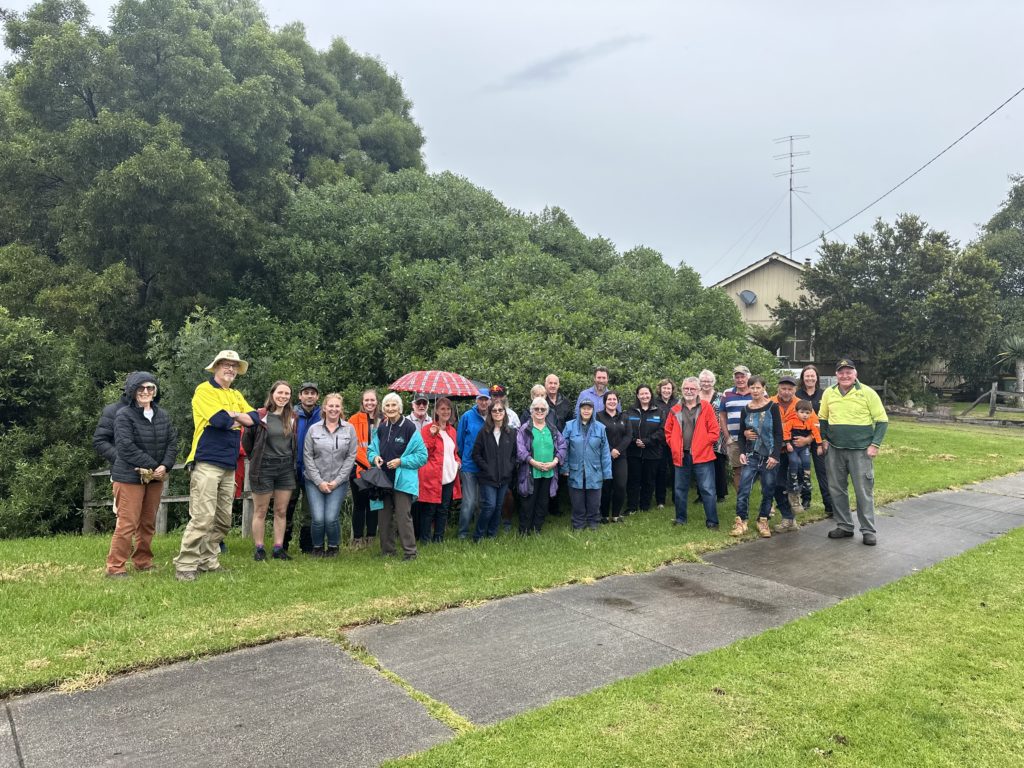
Members from local angling clubs and community groups discovered the underwater goings-on of fish habitat in their local waterways.
The East Gippsland Catchment Management Authority (CMA) hosted a boat tour as a show and tell for people to learn more about the reason behind the fish habitat we have been installing over the last 15 years.
East Gippsland CMA Chief Executive Officer Bec Hemming said, “Over the years, numerous methods for creating fish habitat have been used. Natural materials have been used to create fish habitat using local timber including logs and root balls to mimic an underwater haven for fish.”
“Most recently, 32 structures were introduced to Jones Bay in the Gippsland Lakes. These structures consist of root balls and stumps that have been lying in farmers paddocks for years. Rather than pile them up and burn them, landholders have agreed to let the East Gippsland CMA use them as fish habitat.” Added Bec
Increasing underwater habitat is beneficial and provides shelter and food sources for native fish. Aquatic invertebrates also benefit from this underwater structure, as do other species that rely on these invertebrates and fish as a food source.
Recreational fishing enthusiasts reap the benefits of abundant fish populations, making fishing more enjoyable and rewarding. This project, made possible with funds raised through Recreational Fishing Licence fees, benefits fish populations and angling opportunities.
It has been a joint effort over the years, with the Victorian Fisheries Authority, angling clubs, community groups and agencies working together to improve our waterways for native fish.

Nothing sparks curiosity and understanding in children quite like the touch and feel of real wildlife.
Last week, the East Gippsland Catchment Management Authority (CMA) teamed up with Black Snake Productions on a roadshow of biodiversity presentations to local East Gippsland primary schools from Bairnsdale to Mallacoota.
East Gippsland CMA chief executive Bec Hemming said, “Catchment Connections is teaching students about biodiversity and the connection of what they can do as a school group or individually to contribute to the health of our waterways.”
“By incorporating live encounters with native wildlife, this initiative aims to instil an understanding of our catchment’s delicate balance while keeping the learning experience engaging and hands-on for the students.”
Our young environmentalists got up close and personal with some Australian native animals to help them discover the importance of our catchments and the vital role the students themselves can play.
Black Snake Productions brought along a selection of native animals that call East Gippsland home. Students were able to see and interact with common species such as the Gippsland Water Dragon, Blue Tongued Lizards and a Fruit Bat, less common species including a Bandicoot and the Green and Golden Bell Frog, as well as some of our more endangered species such as the Diamond Python and the Spotted Quoll.
Students learnt about the work agencies like the East Gippsland CMA and other organisations and volunteer groups do to improve the health of our local waterways. There are many Victorians already out there, on the ground, doing important work to protect and enhance Victoria’s vital waterways.
The schools were encouraged to undertake their own environmental projects following the presentation, including building frog hotels, building a native garden or having a clean-up day.
This roadshow was made possible with funding from the Victorian Government’s $248 million investment over four years (2020-2024) to improve the health of waterways and catchments across regional Victoria.

Bairnsdale Joey Scouts combined fun and conservation in an exciting activity to support local frog species.
The East Gippsland Catchment Management Authority visited the Joey Scouts group to show them how to build a frog hotel.
They built a frog hotel, played leapfrog, and learnt about the frogs of East Gippsland, including our endangered species, the Growling Grass Frog.
The frog hotels that the Joeys built will give frogs a safe and comfortable place to take refuge during drier times.
It is great to involve young people in activities like this. They learnt about native species, their habitat and conservation, all whilst having a wonderful time.
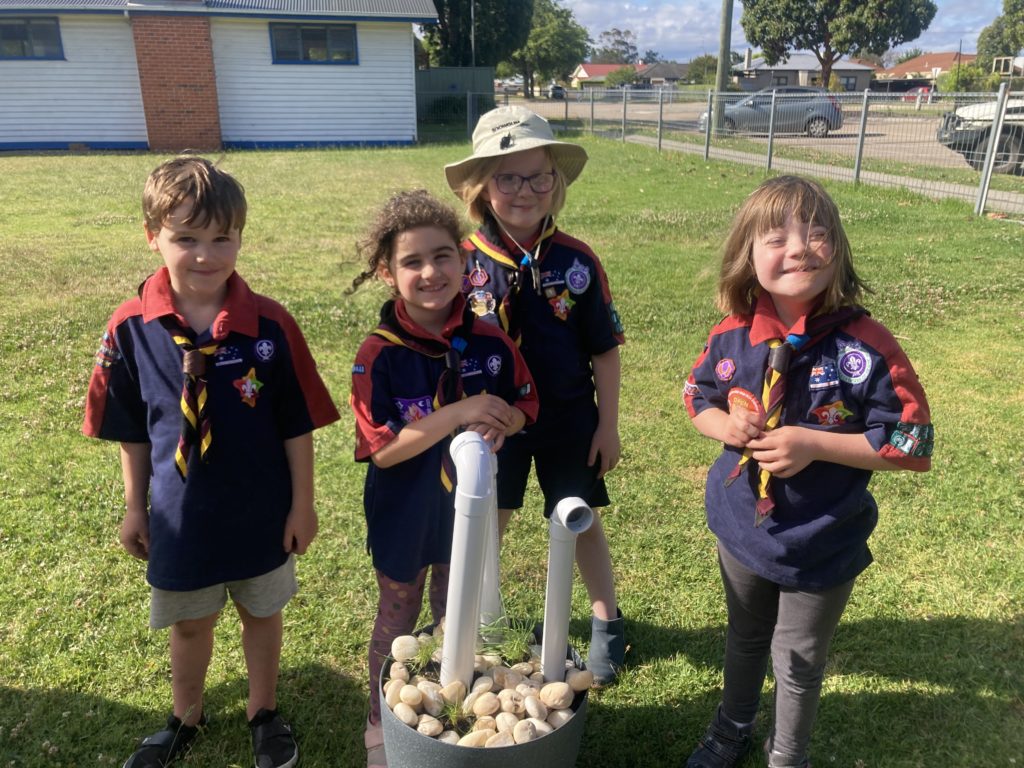
Whilst many are busy with veggies this time of year, we are planting seagrass!
Zostera mulleri is the species we are trialling in an underwater garden patch in the Gippsland Lakes.
Harvesting rhizomes (sections including roots) from areas where the seagrass is growing nicely, we created seagrass kebabs and planted them in areas where the grass is sparse.
We will be watching closely over the next 6 months to see how our little garden grows.
Seagrass is such an important species to the health of the lakes and all the critters that rely on it for food and shelter, we are hoping we can help restore it in some areas.
This collaborative project is made possible through funding from the Gippsland Lakes Love our Lakes program.
Seagrass meadows are a critical component of the ecological character of the Gippsland Lake Ramsar site. This is why it is important we understand how effective our management strategies are in protecting and rejuvenating seagrass populations now and into the future.
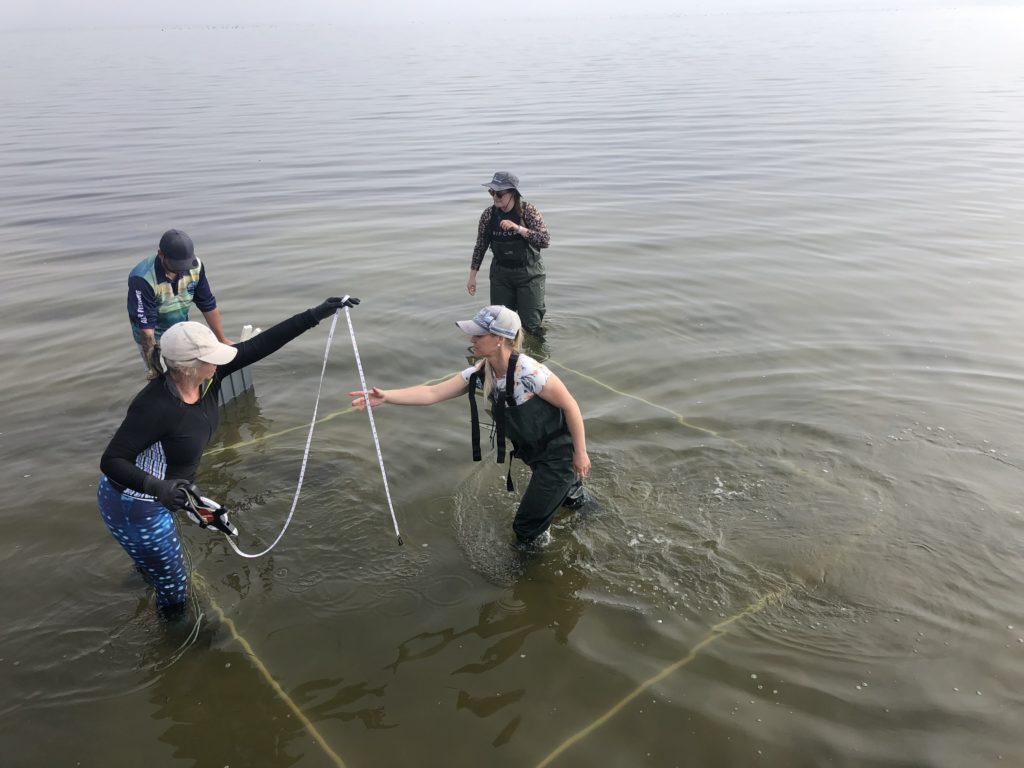
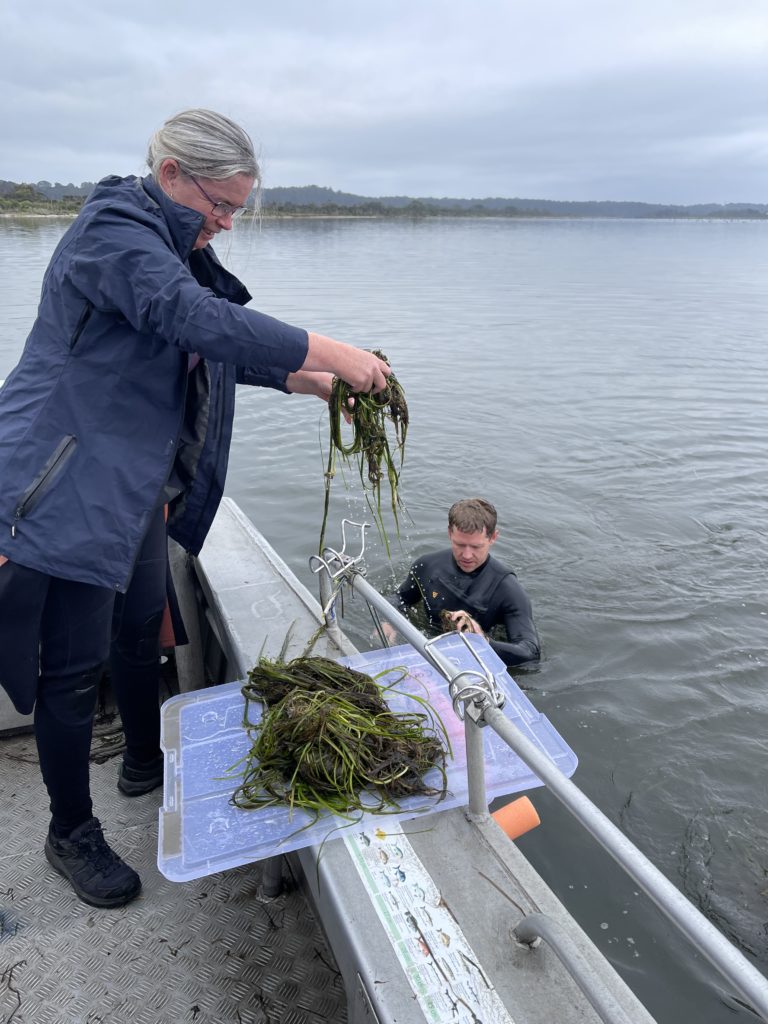
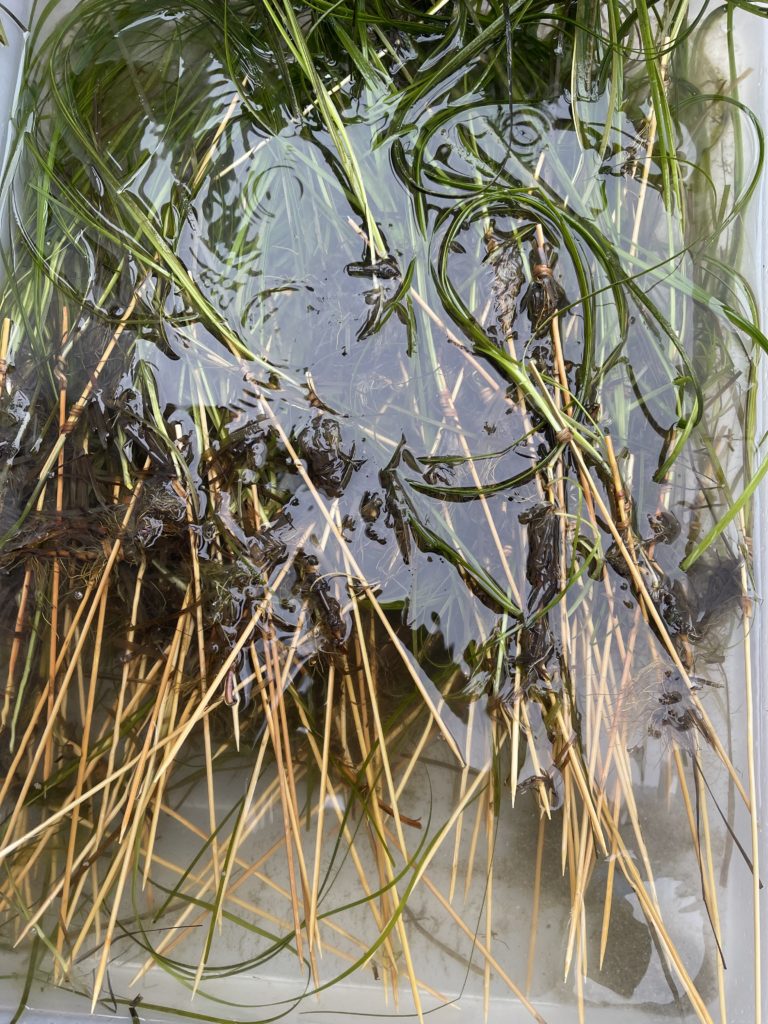
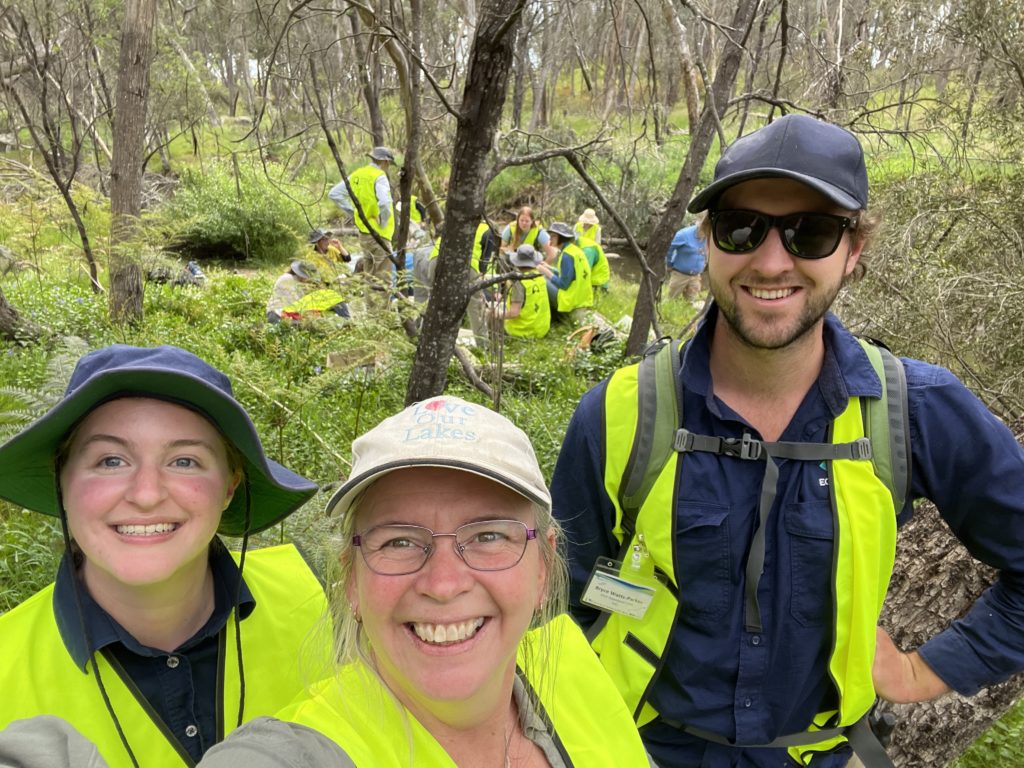
Three East Gippsland Catchment Management Authority (CMA) staff travelled over the mountain to attend the 23rd Wise Waterways Workshop in Beechworth.
The workshop ran over five days, and staff heard from industry leaders, undertook practical fieldwork and finished off with a team presentation.
Topics included geomorphic processes of rivers whereby rivers are shaped by flowing water and floods, including erosion, sediment transport, and deposition. This process continually reshapes the landscape by carving channels, sculpting riverbanks, and influencing the formation of river and stream features.
What works and what doesn’t work in river rehabilitation was discussed. This included key solutions for long-term bank stability of using native plants to strengthen riverbanks, rock beaching, introducing pile fields, rock chutes and utilising timber and other natural materials to stabilise streams.
Keeping communities updated and informed about river health work is extremely important, particularly during emergencies such as fires and floods. The keynote speaker, Jamie Simmonds, Principal Consultant at Water Technology and from Queensland University, discussed the management and responses to the major flood events in Grantham and Lismore communities.
A significant workshop component was collaborating with other river health managers from organisations in Victoria, South Australia, New South Wales, Tasmania and Queensland.
Bec Hemming, East Gippsland CMA’s CEO, said, “We pride ourselves as an industry leader in catchment management, and we ensure that our staff have access to training that ensures they increase and expand their knowledge.”
Thirty-five attendees were split into five groups at the workshop and given a site to assess and report on how they would manage the site and present it back to the cohort. The team presentations were judged by industry and community experts. Our staff captained two of the teams.
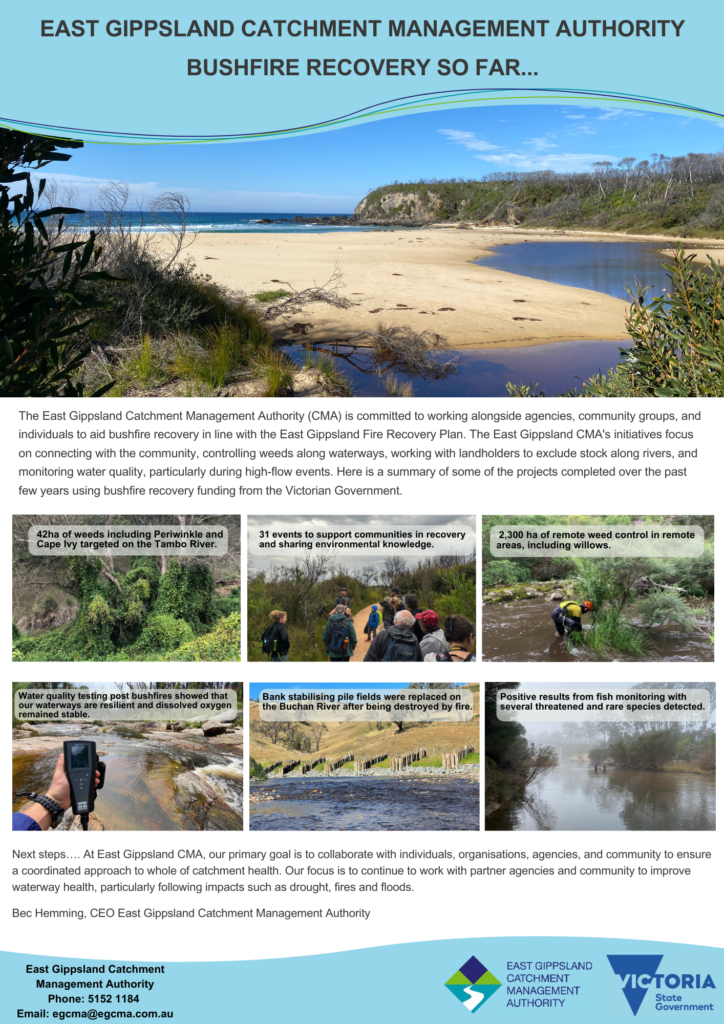
Significant efforts have been invested in bushfire recovery over the past three years, and more work is being done.
The East Gippsland Catchment Management Authority (CMA) continues to invest in bushfire recovery works in response to the 2019/20 bushfires.
Following bushfires, new weeds are expected to emerge, with weeds often being the first thing that grows following a disturbance. Last year, over 730ha of woody weed control was completed in fire-affected areas, and over 2,300ha have been treated since the bushfires.
Bec Hemming, East Gippsland CMA’s CEO said, “We have been working closely with Parks Victoria and the Department of Energy, Environment and Climate Action (DEECA) to tackle remote weeds, sharing projects and information to cover all areas of concern.”
The East Gippsland CMA had contractors working on the Tambo River, targeting weeds that have flourished since the bushfires. Weeds can outcompete the native species, spreading thickly and altering the natural landscape.
Two weeds on the hit list along the Tambo River included Cape Ivy and Blue Periwinkle. Both grow along the riverbanks, with Blue Periwinkle dominating the understory and excluding native species. Cape Ivy can climb up taller shrubs and trees, creating a vision of choking clumps as they grow up the host. Over 40ha of the Tambo River’s banks have so far been treated.
Whilst the weeds enjoyed the wetter seasons following the bushfires, so did many native plants and shrubs. On a stretch of the Tambo River where the weeds dominate, just a few kilometres away, multiple species of natives are growing successfully. Larger native species create the perfect canopy and safe place for smaller species to flourish. Over 15 species of native grasses, plants and trees were identified in one small section along the banks of the Tambo River.
Pioneer species, such as silver wattle, tend to grow quickly and in abundance following a fire. Still, this has advantages as they assist with soil stabilisation and creating habitat for birds and insects whilst other natives recover and grow.
“Remote weed control can be difficult to undertake, agencies and contractors work closely together to treat willows, broom, and blackberries in quite natural and remote areas.” Bec said.
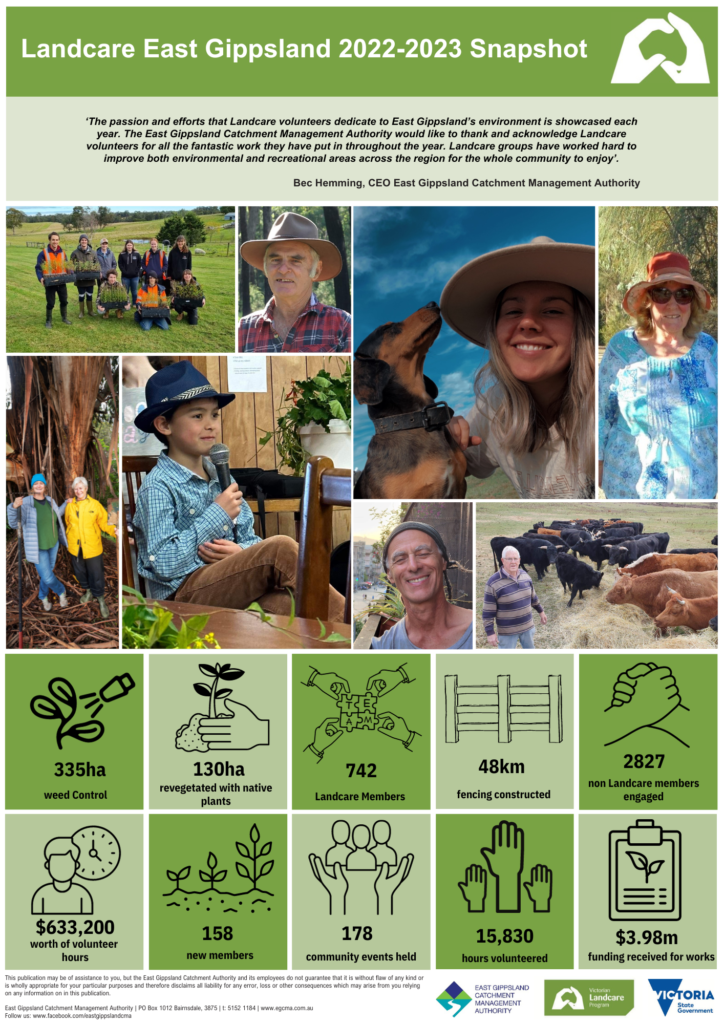

A threatened native fish species, an Australian grayling, has been found at the top of the newly constructed fishway in the Buchan River.
The Buchan River rock ramp fishway was built to address the barrier to native fish migration caused by the Buchan River’s potable water supply log weir.
Post-construction fish monitoring was completed last week with the exciting find of an Australian grayling. The fish was found at the top of the fishway, a section of the river that they wouldn’t have been able to get to before the fishway was constructed.
“This is inspiring news and exactly what we were hoping monitoring would prove, that fish can now migrate upstream of the weir, and the fact that a threatened species was found is icing on the cake.” Said Bec Hemming, East Gippsland Catchment Management Authority’s CEO.
Monitoring before construction of the fishway provided a snapshot of native fish populations close to the weir. Seven species of native fish were detected, with fewer upstream than downstream.
The East Gippsland Catchment Management Authority worked with East Gippsland Water to construct the fishway designed and built to allow fish to migrate a further 127km along the upper reaches of the Buchan River.
The Buchan Fishway project forms part of a $248 million investment by the Victorian Government to improve the health of waterways and catchments across regional Victoria.
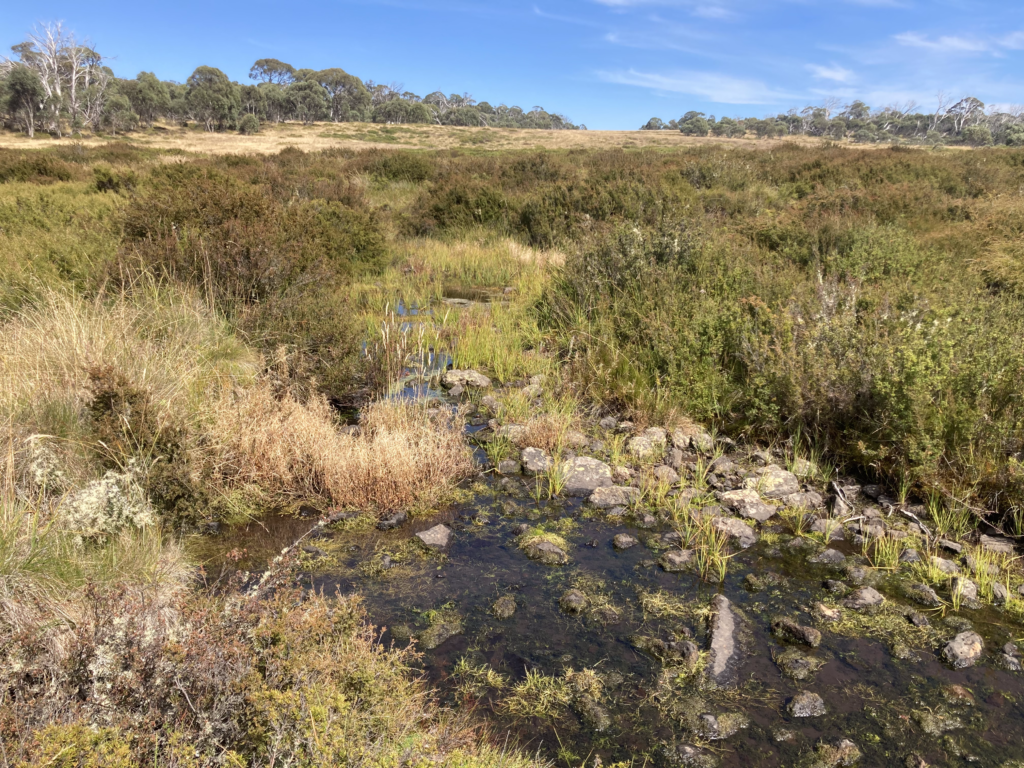
East Gippsland is home to some of Victoria’s 2000 hectares of Alpine Peatlands.
Alpine peatlands, or Alpine Sphagnum Bogs and Associated Fens, are a nationally threatened ecological system found high in the Alps at the head of Victoria’s catchments.
Peatlands act as a sponge, absorbing and holding moisture, and are a great water filtration system. They also provide habitat to several endemic and threatened species of flora and fauna, including the Alpine Tree Frog, Baw Baw Frog, and the Alpine Water Skink.
During a five-year cross regional project and for over a decade, Parks Victoria has worked with partners, experts and volunteers to protect these peatlands through invasive species control, weed management, research and monitoring.
The five-year Cross Regional Victorian Alpine Peatland Protection Project, delivered by Parks Victoria, in collaboration across three CMA regions (North East, East Gippsland and West Gippsland), through funding from the Australian Government’s National Landcare Program
Acting East Gippsland CMA CEO Amber Clarke said this cross-regional project focussed on improving the resilience of the fragile peatlands to protect and enhance these unique environments.
“Partnerships are paramount in completing a project like this, as they foster collaborative efforts, share resources and expertise, ensuring a comprehensive and effective approach to addressing any challenges.” Said Amber
“To mark the completion of this five-year Cross Regional Victorian Alpine Peatlands Protection project, North East CMA has released a video that can be viewed here.”
Partners in the video include Parks Victoria, North East CMA, East Gippsland CMA, West Gippsland CMA and Gunaikurnai Land and Waters Aboriginal Corporation.
These Peatlands are crucial not only because they provide homes for many species, including threatened ones, but they also regulate the flow of water, ensuring the balance of surrounding ecosystems and influencing water health further down the catchment. This is important for the whole community.
